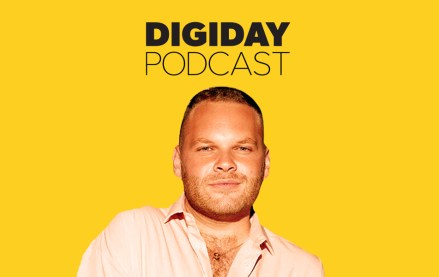Connect with execs from The New York Times, TIME, Dotdash Meredith and many more

In a truly effective marketing team, each team member is aligned, using shared tools and processes to efficiently create, collaborate and connect with their customers.
With a content hub, marketers can break down the silos that have traditionally held them back, increasing collaboration in the crucial planning and workflow stages.
Implementing this technology will make it easier to create engaging content that drives consistent, connected human experiences throughout the customer journey. It helps marketers cover all their bases and deliver content when and where it is needed. In the way of examples, what follow are success stories, each illustrating what’s possible when a content hub comes into play.
Centralizing content creates easy access
When marketing teams are dealing with large volumes of content, inefficiencies in content management can significantly impact day-to-day operations. It slows output, adds frustration to the customer experience and leads to mixed messaging.
That’s what one major European car manufacturer was dealing with before implementing a content hub. This global business was advertising over 50 models in more than 80 markets, across 30 languages — a big ask by any standard. The teams struggled to overcome labor-intensive manual processing and an inability to quickly deliver content through their app and print channels.
By picking a strong partner and using a content hub to centralize the asset repository for their content marketing, they managed to cut processing times for the app from 83 days to just 33 and print from 58 days to 40. Even with almost 2,000 new PDFs being created a day, by managing all content centrally the business saved time and money, aligned their teams, and drastically improved the customer experience. Their app jumped from a low two-star rating to a robust four-star rating.
Enabling a holistic approach to content drives impact and engagement
If teams and content creators are not aligned on overarching goals, they could be wasting their time creating assets that aren’t useful to the overall campaign. This can have a knock-on impact on customer experience. For example, if the website says one thing, and social media channels say something else, then messaging will be inconsistent, confusing and not very engaging.
For a more effective experience, publishers need to take a holistic approach to content management, ensuring that digital assets are aligned, and that only a “single version of truth” exists for each one. A content hub can unlock that holistic oversight of content coming in and content going out, and marketing teams will know whether messaging is aligned with the audience and customers.
In one example, a U.S.-based winery used a content hub to manage global content for a wide-ranging brand portfolio. Before implementing a content hub, the business didn’t have oversight of the types or volume of content being created. This meant that not only was it difficult to deliver content, it was near impossible to determine its impact. By embracing a content hub, this business was able to unite teams, gain clearer insight of their asset library, and improve productivity and efficiency across the content supply chain.
Ensure content is always ready to go
Time is of the essence when it comes to delivering content, especially when businesses are reacting to sudden changes in the marketplace.
Having a content hub can help marketing teams deliver impactful content faster and more efficiently, and to better manage all the steps toward publishing. From planning to creation, through to approvals and sign off, a content hub will help make content publishing a smoother process. Though a content hub will usually hand-off to another delivery mechanism such as a CMS or social media platform for the actual publishing stage, it will also ensure every part of that process is seamless.
General Mills, one of the world’s most iconic consumer goods brands, used to spend a lot more time and money on re-creating content for its various channels. Now, by employing a content hub, General Mills marketers are able to reduce spend and effort on asset creation, reusing and repurposing existing assets in new and creative ways. Utilizing built-in, AI-powered digital asset management, they can now deliver content to dozens of channels, practically simultaneously.
A business doesn’t have to be a global giant like General Mills to experience the benefits of a content hub, either. All the organizations mentioned in this article — and there are more at this resource page — have adopted one, and the connected, integrated cloud-based solution helped them take control of their content, from the moment it is developed to the time it goes out the door (and beyond). The content hub, at its core, is a central repository for content, but it is also much more — a time- and money-saver, a powerful tool for bringing down silos and a real engagement builder.
More from Digiday

In Graphic Detail: Inside the state of the creator economy industrial complex
The creator economy might have started out as an alternative to traditional media, but is becoming more and more like it as it professionalizes.

Ad Tech Briefing: How ad tech underpins the fate of Madison Avenue’s ‘Wedding of the Year’
The ‘brand safety’ debate is threatening to derail the IPG-Omnicom merger, while questions are raised on the integration of Annalect and Acxiom.

‘Embrace your chaos’: How creator Brandon Edelman is trying to plan for the future
While creators are now key to marketing budgets, their longevity in the fast-paced digital world is a pressing concern. This episode explores how TikToker Brandon Edelman is navigating that challenge, building a sustainable career by diversifying his content and focusing on brand partnerships.





